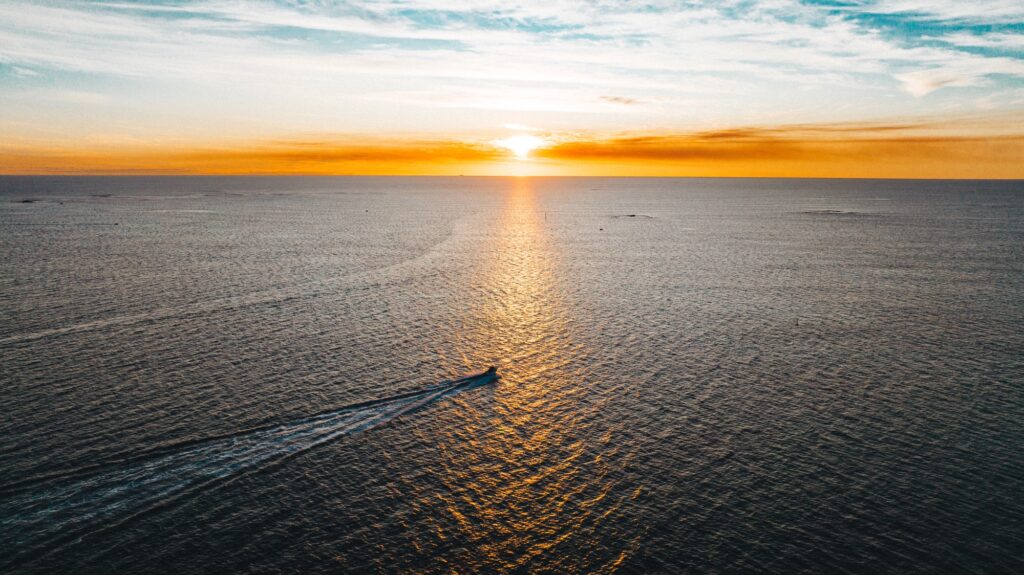Drones have come a long long way in the last few years but how far can drones fly? With flight times over 45 minutes and ranges over 20 kilometres, you can now do so much with them.
In this article, I will answer how far can drones fly, but bear in mind that the range they give on paper is often not the same as in real life as there are obstacles and signal interference.
How Far Can Drones Fly?
Some of the latest consumer drones can fly up to 32km. Here is a chart for how far drones can fly. This would be under optimal conditions with no obstacles or wind:
|
Drone |
Range |
Flight Time |
|
DJI Mini SE |
5-10km |
30min |
|
DJI Mini 2 |
16km |
31min |
|
DJI Mini 3 |
18km |
38-51min |
|
DJI Mini 4 Pro |
18-25km |
34-45min |
|
DJI Mavic 2 |
18km |
31min |
|
DJI Mavic 3 |
30km |
46min |
|
DJI Air 3 |
32km |
46min |
|
DJI Avata 2(FPV) |
13km |
23min |
|
Skydio 2 |
6km |
27min |
|
Autel EVO 2 |
15km |
45min |
The DJI Air 3 has both the longest range 32km and the longest flight time of 46 minutes. Close second place is the DJI Mavic 3 with a 30km range and 46 minute flight time.
Understanding Drone Range and Capabilities
The flight range of a drone refers to the maximum distance it can travel from the controller. This range can vary depending on factors like drone technology, design, and weather conditions.
Modern drones often use various GNSS systems to improve dependability and precision. These encompass the Russian GLONASS, European Galileo, and Chinese BeiDou systems, offering extra satellites and signals for positioning.
There are commercial drones like the DJI Matrice 350 RTK which has a drone flight range of 20km, with a flight time of 55 minutes. These drones are great for 3D mapping with their long flight times and mechanical shutters.
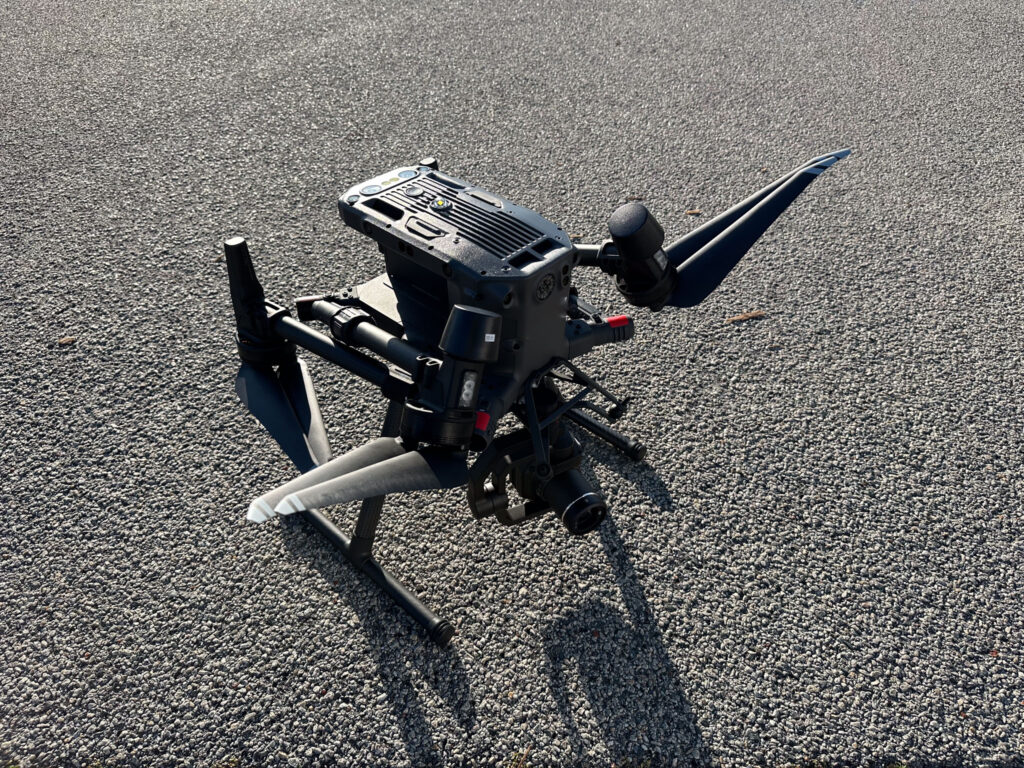
Theoretical vs. Real-World Range
When discussing how far can drones fly, it is important to distinguish between their theoretical maximum range and their real-world range. The theoretical maximum range refers to the maximum distance a drone can technically fly under ideal conditions, such as no wind, no obstacles blocking signal and optimal battery performance.
However, in real-world scenarios, environmental factors like wind, rain, and temperature can affect a drone’s flight range. Wind resistance increases with wind speed, which consumes more battery power.
Cold temperatures can also impact battery performance and flight range. It is important to consider these factors when estimating the actual flight range of a drone in different conditions.
The Impact of Interference on Drone Signal and Flight Range
Interference can have a significant impact on a drone’s signal and flight range. Signal interference can occur due to various factors, including the presence of other electronic devices, buildings, and natural obstacles like the Bermuda Triangle(DM me if you make it through)!
This interference can weaken the drone’s signal, affecting its control and range. I have flown the DJI Mavic which has a 30km range and lost signal on my phone when it is 300m away because I had flown over a hill. I have also flown it up to 3 kilometers away and still had a signal because there were no obstacles or interference.
Types of Interference Affecting Drones
Several types of interference can affect how far can drones fly. Ground-level interference occurs when the drone is flying close to the ground, and the signal can be obstructed by buildings, trees, hills like the one in the image below and other objects.
Interference can also affect GPS technology, especially in areas with poor satellite reception or high levels of electromagnetic interference. Visual line of sight interference occurs when the drone is flying behind objects or out of the operator’s line of sight, causing a weak or lost signal.
How to Overcome Signal Interference
One option is to use additional equipment, such as a signal booster or range extender, which amplifies the drone’s signal and extends its range. These devices can help maintain a strong connection between the drone and the remote controller, even in areas with interference. The DJI RC Pro has a better range than the controller which comes standard.
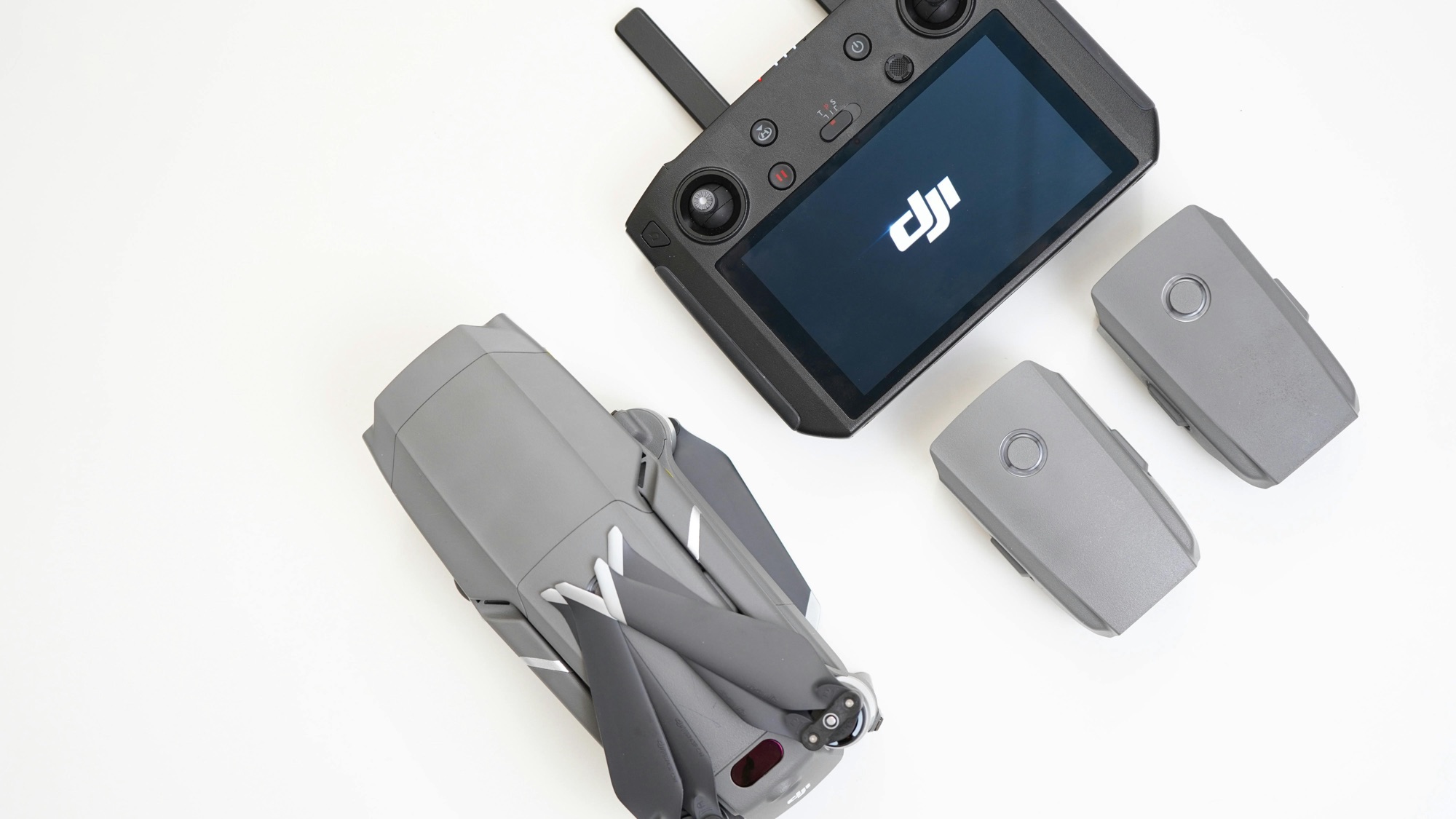
Experienced operators can navigate through interference and adjust their flight paths to maintain a strong signal. They can also take immediate action if they notice any signs of signal interference, ensuring a safe and uninterrupted flight.
Navigating obstacles is crucial for enhancing drone performance, especially for consumer drones used for various purposes like aerial photography and videography.
Common Obstacles for Drones
For aerial photography and videography, obstacles like power lines are a big hazard as you can’t see them through the eyes of the drone and often your obstacle sensors won’t pick them up.
Also, buildings, trees, and other structures can pose a challenge. Drone pilots need to carefully plan their flight paths and be mindful of their surroundings to avoid collisions and ensure the drone’s and people’s safety on the ground.
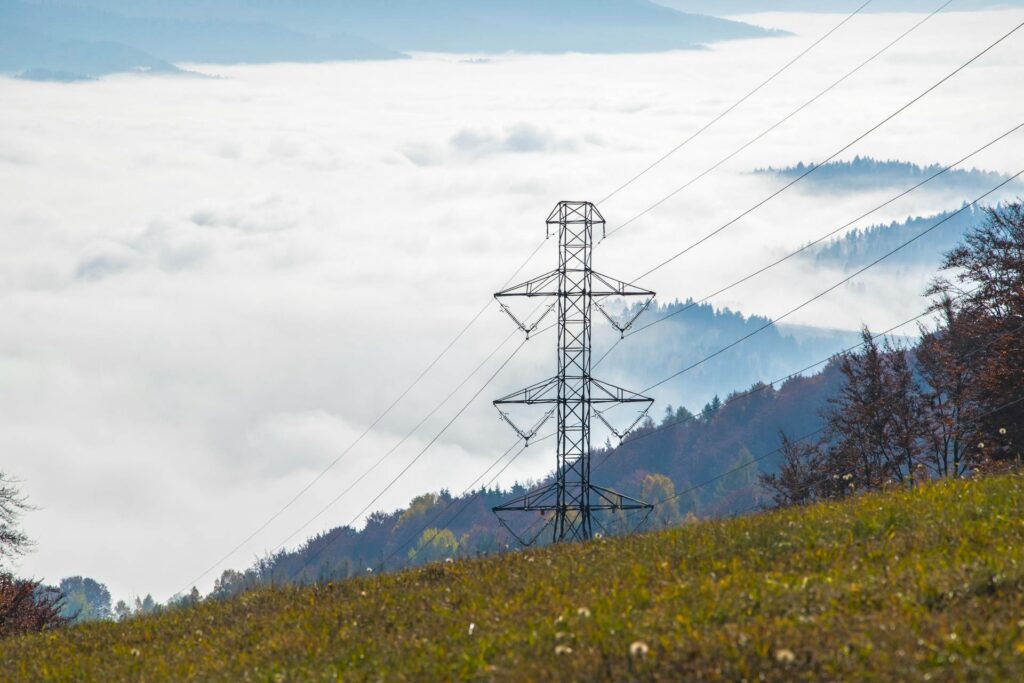
In commercial operations, obstacles can include regulations and restrictions imposed by local authorities, airspace limitations, and safety considerations.
Tips for Avoiding Obstacles During Flight
Try getting to high ground before flying, this will prevent obstacles from blocking the signal. Bare in mind that flying behind buildings, mountains and any other large structure will block your signal.
Getting as close to your intended shooting location as possible is an obvious tip but if you intend on flying far away then do this with 100% battery to avoid running out of battery on the way back, lots of drones get lost at sea.

Extending Your Drone’s Flight Distance
There are various techniques and technologies that can be used to improve a drone’s flight range and maximize its flight time.
Techniques to Improve Drone Range
One technique is utilizing efficient propellers that generate more lift and require less energy, allowing the drone to fly for longer periods. Check to see if you can upgrade your drone propellers, they are usually cheap to do so.
Flying in non-built-up areas which don’t have electronic signal interference or WIFI. Also, your range will always work better if you get high up on say a mountain or fly from the top of a building.
Technology and Accessories to Extend Range
Drone accessories like signal boosters, can amplify the drone’s signal and extend how far can drones fly, allowing it to fly further without losing connection to the remote controller.
Drones like the DJI Mavic 2, DJI Mini 3 and DJI Mini 4 Pro can be purchased with intelligent flight batteries which allow for longer flight times and further range than the standard batteries.
Top Long-Range Drones on the Market
DJI, a leading drone manufacturer, offers a range of models known for their long flight times and extended range. If you are looking for consumer drones with the best range then you can’t go wrong with the DJI Mavic 3, DJI Air 3 or the DJI Mini 4 Pro.
These drones are designed to meet the needs of professional drone operators and are equipped with 360 obstacle avoidance, and intelligent flight modes like active track and waypoints.
1. DJI Air 3
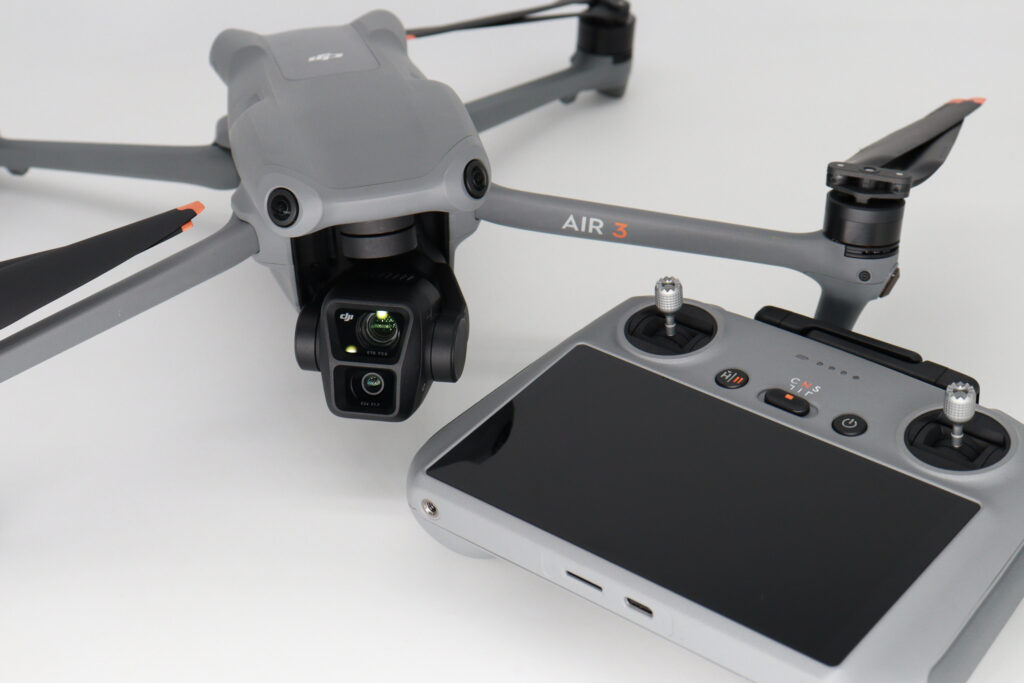
Capable of shooting 4k 60fps HDR videos and a dual camera which shoots a combined 48MP photo, this drone really is amazing. It also has an impressive 32km range which makes it the best long range drone.
Weighing in at 595 grams the DJI Air 3 is bigger than the Mini-series and smaller than the Mavic series. It’s packed full of great features and is one of the top drones with the best range that’s capable of producing high-quality footage
Key Features
- 1/1.3″ CMOS Medium Tele & Wide-Angle Dual Primary Cameras
- 46-Min Max Flight Time
- Omnidirectional Obstacle Sensing
- DJI O4 20 km HD Video Transmission
- Dual-Camera 48MP Photos
- 4K/60fps HDR Videos
- 32 km range
The Air 3 is equipped with APAS 5.0, which allows it to execute more seamless avoidance manoeuvres when it encounters obstacles.
2. DJI Mavic 3
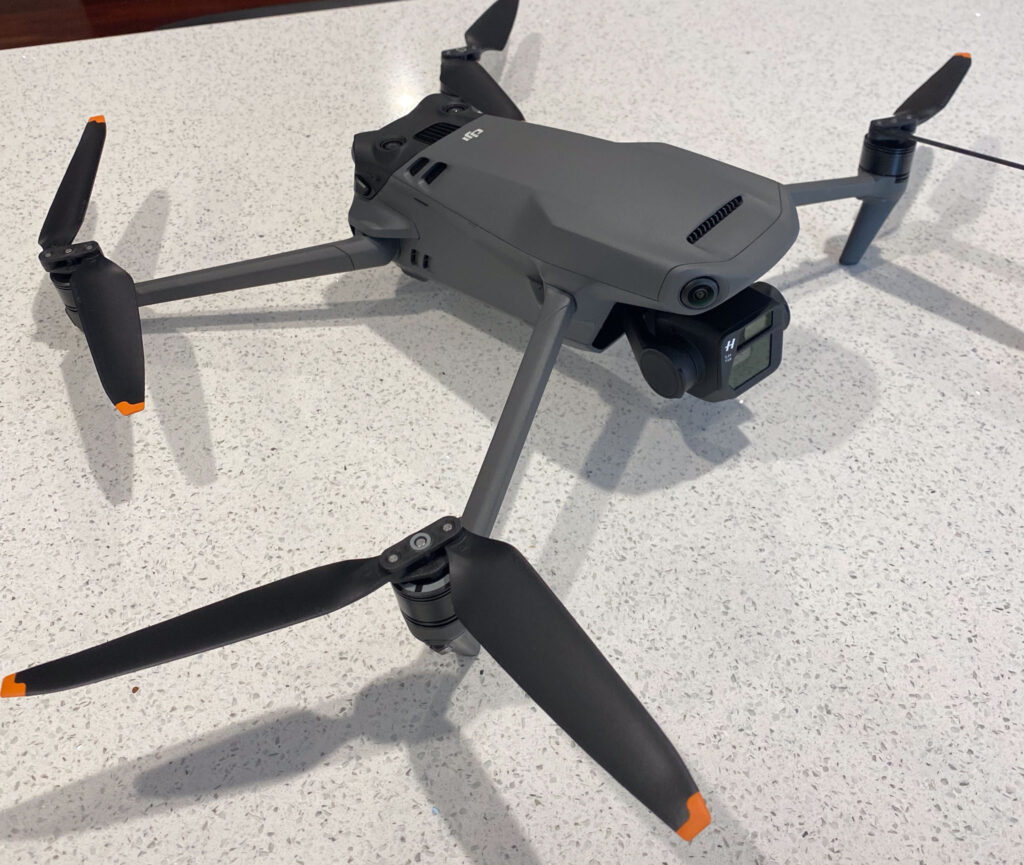
The DJI Mavic 3 comes with an amazing 30km range and 46 minute flight time. With the option to upgrade the DJI RC Pro controller which has a number of benefits including a more stable connection.
Key Features
- 46 minute maximum flight time
- 20 metres per second horizontal speed
- 8GB internal storage (1TB in Cine version)
- Hasselblad Camera: 4/3 CMOS, Effective Pixels: 20 MP
- 5.1K 50fps video
- 4K 120fps
- 360 Omnidirectional binocular vision system
- 30 km18.6 miles)range
The Mavic 3 is a cheaper alternative to the Mavic 3 Pro and still has high-quality features. It’s equipped with omnidirectional obstacle sensors that provide unrivalled 360-degree coverage, ensuring that this drone can predict and escape potential collisions from all directions.
Its Hasselblad 20MP 4/3 CMOS camera delivers breathtaking images and 5.1k videos, capturing every detail with crystal clarity. With up to 46 minutes of flight time on a single charge, you can explore and capture more without worrying about running your battery dry.
3. DJI Mini 4 Pro
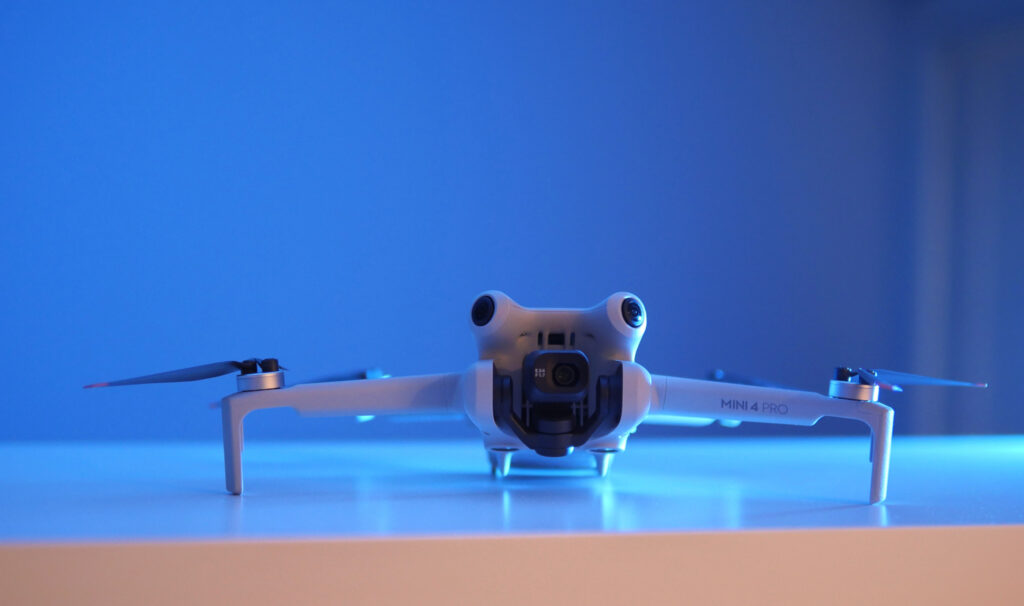
Rated as one of the best drones for beginners, the Mini 4 Pro comes with omnidirectional sensors, constantly scanning the environment for obstacles and altering its course to avoid collisions.
Despite being ultra-portable and lightweight, coming under the 250g mark, the DJI Mini 4 Pro doesn’t compromise on performance and features. With up to 45 minute flight time(intelligent flight batteries) and capable of shooting 4k 60fps, the Mini 4 Pro is one of the best drones for beginners.
Key Features
- Lightweight 249 grams
- 4k 60fps
- Omnidirectional obstacle avoidance
- 34-45 minute flight time
- 10-bit D log
- 18-25 km range
Best Practices for Safe Long-Distance Flights
When flying drones for long distances, there are several best practices that drone operators should follow to ensure safety and compliance with regulations:
1. Maintain visual line of sight
Keep the drone within the pilot’s line of sight at all times. This allows you to maintain control and avoid potential obstacles or hazards.

2. Plan the flight route
Plan the flight route in advance, taking into consideration any airspace restrictions(use ok2fly app), populated areas, or other potential hazards. This will help ensure a safe and efficient flight.
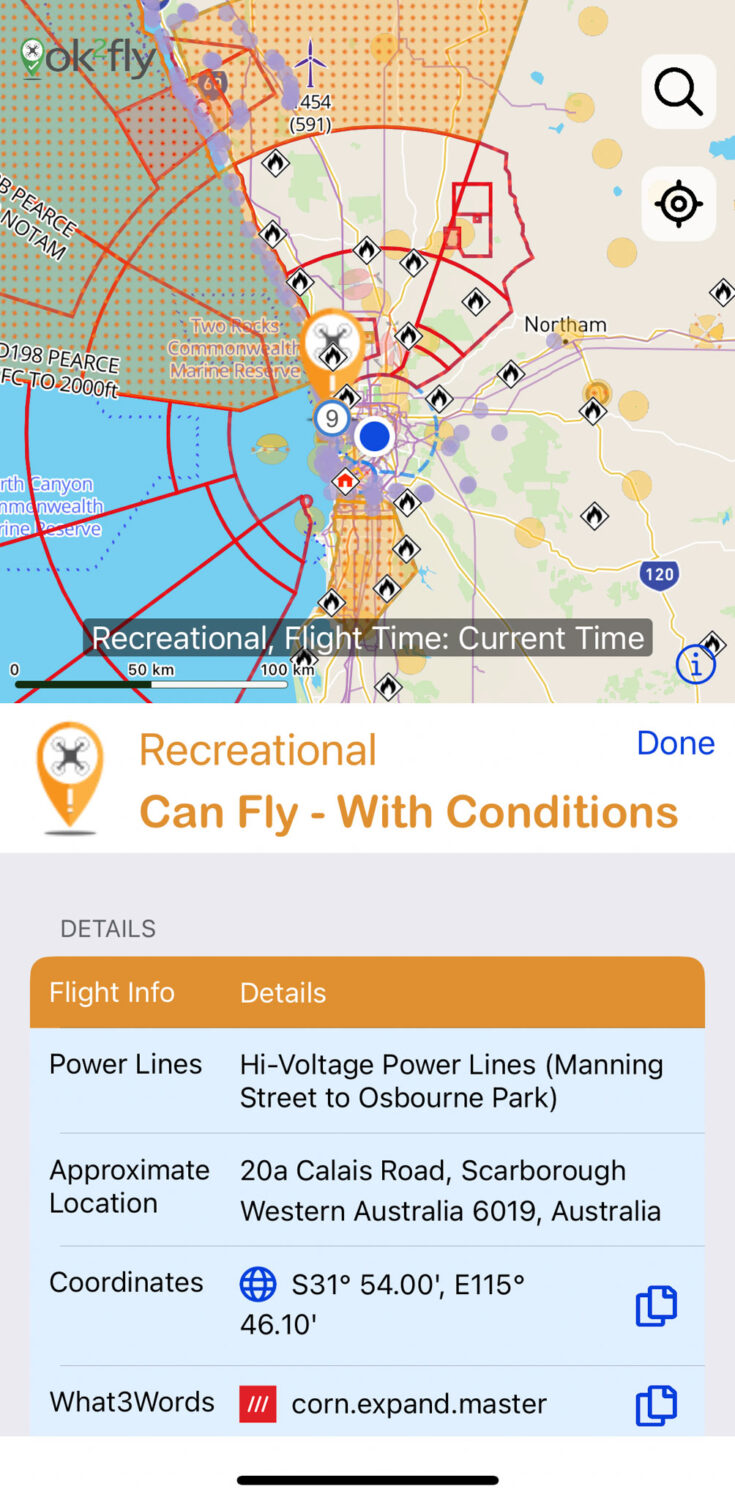
3. Check weather conditions
Before flying, check the weather conditions and avoid flying in strong winds, rain, or other adverse weather conditions that could affect the drone’s performance and flight range.
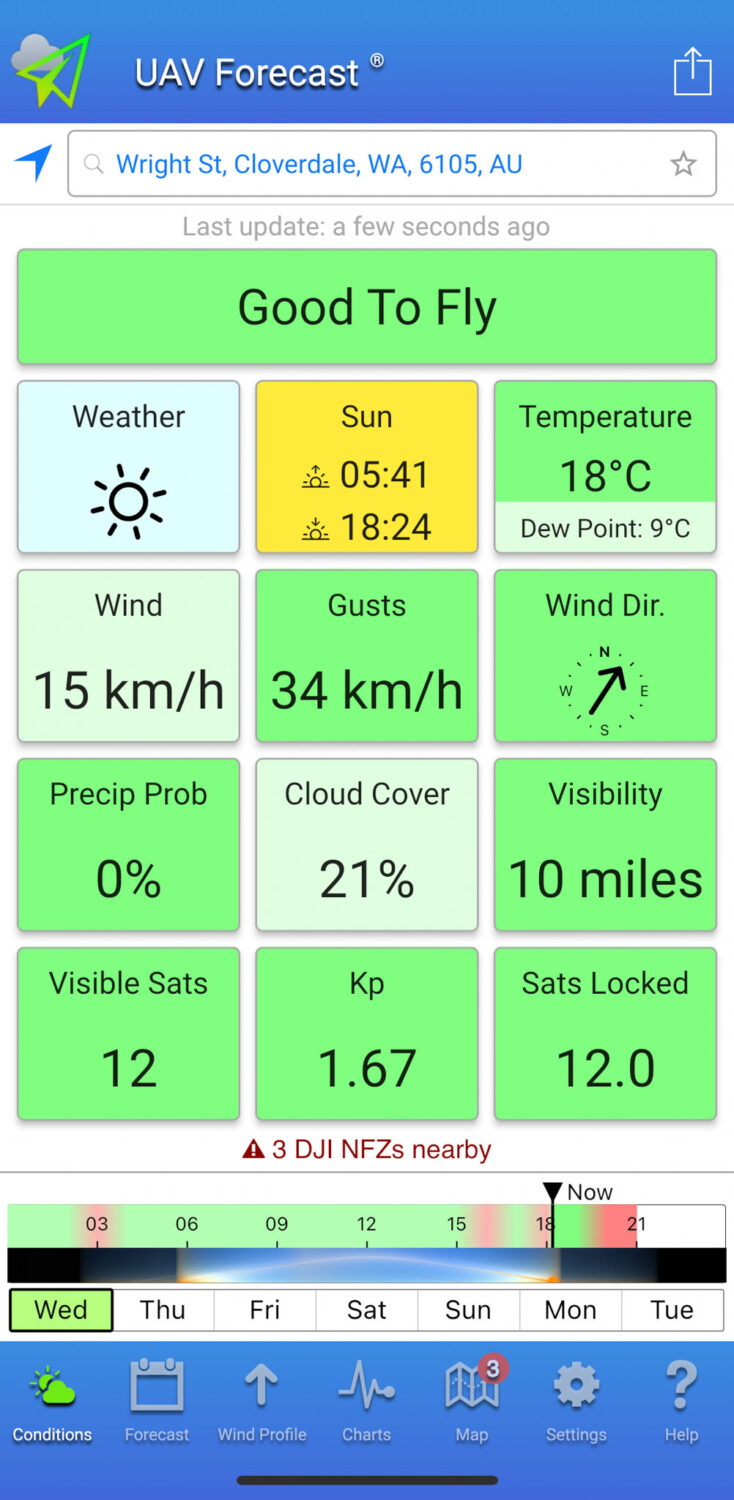
4. Perform pre-flight checks
Before each flight, conduct a pre-flight check of the drone, including checking the battery level, ensuring proper GPS signal, and inspecting the drone for any damage or malfunctions.
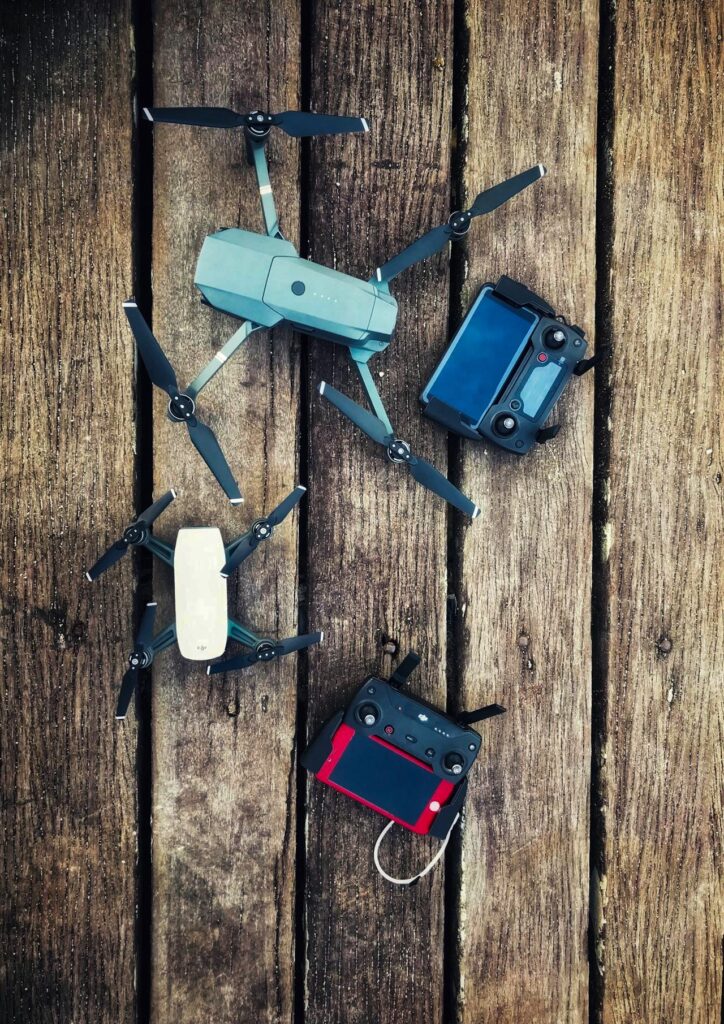
5. Follow manufacturer guidelines
Follow the manufacturer’s guidelines and recommendations for safe drone operation, maintenance, and flight limitations.
By following these best practices, drone operators can ensure safe and responsible long-distance flights, minimizing the risk of accidents or incidents and complying with regulations.
Wrap Up
So how far can drones fly? The DJI Mavic 3 can fly up to 30km and the DJI Air 3 up to 32km! Bear in mind your drone will most likely run out of battery when flying back from this distance.
Although the DJI Air 3 has a bit better range than the Mavic 3, the Hasselblad camera is what sets it as the best beginner drone with a camera.
Factors like battery life, drone technology, and environmental conditions greatly influence flight range.So don’t be letting your drone get dusty, get out there and test how far your drone can fly.
Frequently Asked Questions
Can Drones Fly in the Rain?
Most drones cannot fly in the rain. If it rains then land immediately. However, some commercial drones like the Matrice 300 range can withstand light to moderate rain.
How High Can Drones Fly?
On the controller for most DJI drones, the altitude limit is 500 metres. Legally you’re not meant to fly above 120 metres(400 feet) as you will be heading into the same airspace as planes.
What Happens When You Lose Connection to Your Drone?
When you lose connection to your drone the screen will go black and then it will automatically fly back to where you took off. DJI drones will usually regain connection after no more than 30 seconds of returning to home.
I'm Matt, a writer and drone photographer with over 6 years in the field. I specialize in all things drones – from buying guides and editing tips to monetization strategies. My goal is to help enthusiasts and professionals alike navigate the exciting world of aerial photography and videography, sharing insights that turn drone passion into expertise and opportunity.

